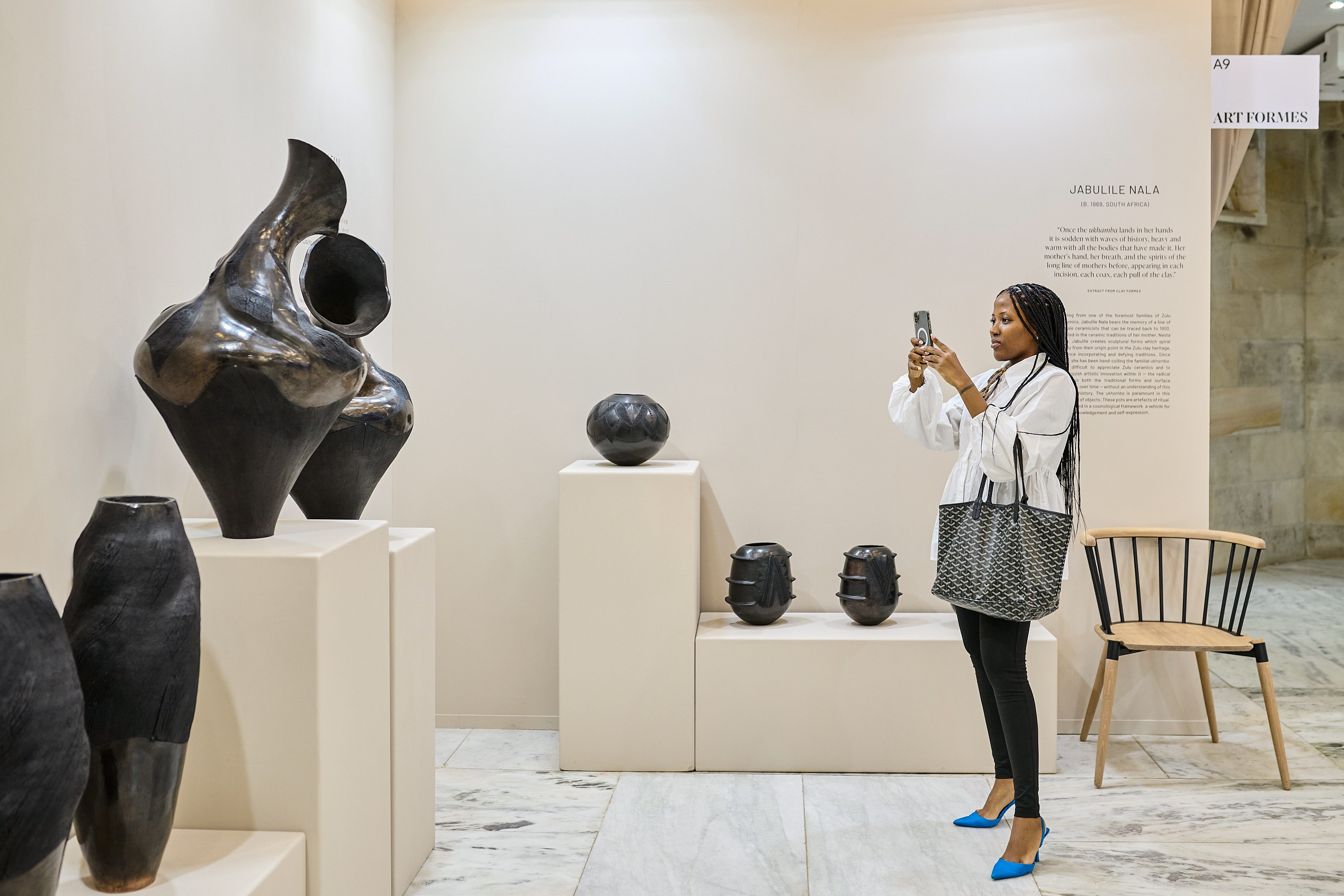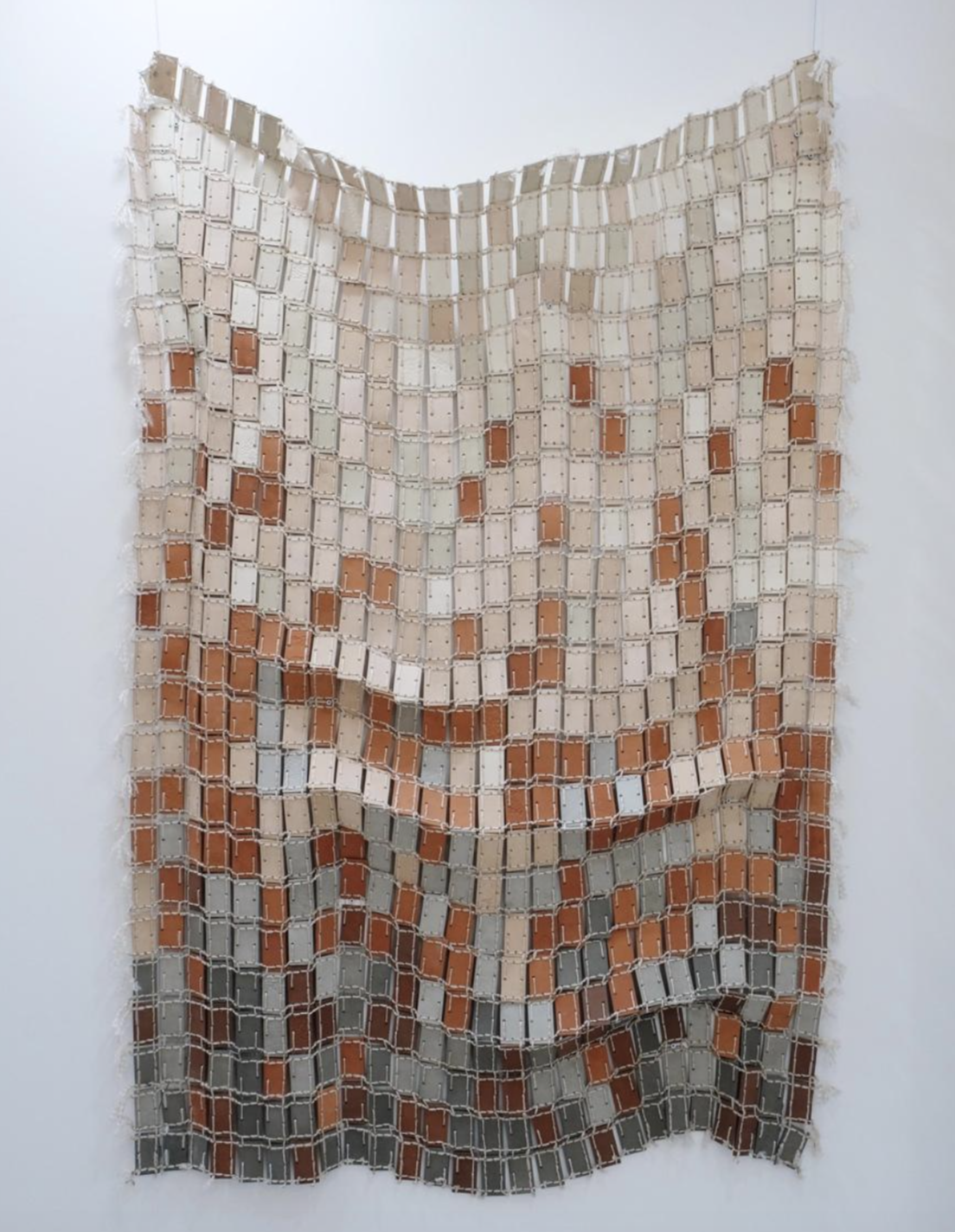Beyond Function: The Persistence of Clay
- By Dineo Ponde
-----------
In May of 2024, the annual RMB Latitudes Art Fair was held at Shepstone Gardens, in Johannesburg’s Houghton. Amid a magnificent garden, the fair was positioned almost as an open cathedral, resembling Romanesque-inspired architecture. It felt like a spectacle for the bourgeoisie. While walking through the maze I saw the expected. The usual abstractedly configured paintings, Gail Catlin’s painted dogs and Guy du Toit’s Hares were scattered around the garden. There were some sculptural iterations of the Madonna and child (except make it Africa and out of bronze). Black portraiture, in its different modalities and of course the favourable black modernist South African relics; Gerald Sekoto and George Pemba. I chucked as I walked past a Jacobus Pierneef painting. While this was all very admirable, I was craving something a little more tangible. This drew me to the tactility of the clay works on exhibition – an essential moment of grounding in an oversaturated visual environment.
 Siyabonga Fani, Dudlu, 2024, R48,000.00 ex. VAT, CONTACT TO BUY
Siyabonga Fani, Dudlu, 2024, R48,000.00 ex. VAT, CONTACT TO BUY
Earthing, also known as grounding, helps balance and connect our bodies to the earth’s electromagnetic field through our electrons. Walking barefoot, and gardening are great examples of these. Ancient civilisations from the Egyptians, Greeks, Romans and Indigenous cultures have used this technique. This is appealing because it highlights human beings’ dependent and vital connection to the Earth and the material it emits, such as clay.
Caitlin Macdonald echoes something similar in Clay Formes (an Art Formes publication) expressing that clay predates human civilisation, in our use of its organic form as a life force: “We have constructed shelters, vessels for food and water, made idols, art objects, vases, currencies, talismans, funerary urns and inscribed laws and myths upon clays surface”. Clay is deeply versatile, and yet it is often appreciated for what it can do as opposed to what it allows us to feel, decipher and understand beyond its utilitarian function. It appears we need clay works because of their ancient and timeless familiarity.
I sought after artists whose works were vastly different, in appearance and subject matter but were held together by their use of clay works beyond its practicality. Artists Siyabonga Fani, Dominic Pretorius and Nicola Smith create a different syntax using such simple yet malleable materials. Clay’s ability, as expressed in Clay Formes, is “to change, to lumber towards the future, clay forms wax and wane; they are capable of great frailty and recovery”. Clays’ capability to morph and shapeshift holds so many dualities, it is both soft and sturdy (once fired), elastic and fixed, and it is difficult to think of it as a one-set thing.
Present in the exhibition booth Art Formes (initiated by its founder Olivia Barrell), were Fani’s, organic, bodily clay vessels standing tall and wide. Fani’s terracotta clay is burnished once semi-dry, then smoke-fired to create a burned brown colour. I was amazed at how the vessel's small base was able to carry its overarching weight. They feel as though they are collapsing and expanding into each other. On them are bends, grooves and reliefs that mimic woodcuts but are stretched-out clay.
I can’t help but wonder if the textural difference reflects the contours in landscapes due to the meandering aspect of his work, which mirrors hills, rivers and valleys. Barrell comments on how Fani’s use of clay, beyond its conventional representations of clay pots or natural landscapes, challenges an imperialist monolithic portrayal of African ceramics altogether. His work brings to the fold fuller, and more nuanced narratives. Fani’s work is informed by his experience living in Gugulethu township, as opposed to a homeland in the Eastern Cape both speak to the “legacies of Apartheid-era spatial planning”, it is no doubt this still plagues South African society today. Fani’s work allows Clay to be conceptual as it is materially dynamic.
Then there are the clay works of Pretorius, who exhibited with the up-and-coming Cape Town Gallery, Vela Projects. His work reads as excavated archaeological ruins, more than shrined Urns. They are too mystical, too frail to have once held the ashes of a deceased one, even in its original historical timeframe. Urns, in general, are unsettling because of their association with loss and grief and the unanswerable question around an afterlife make you shiver. Still, despite what they represent, they also hold an ephemeral sacredness to them, that makes them so deeply beautiful. Peculiar, is it not? That what we make to hold our dead will one day hold us. Pretorius expresses how his Urns are not time-nor-site bound, that they do not belong to one physical realm but rather can be considered as an “archaeology of myth”. The main question that surrounding this body of work is “What do urns contain, symbolically speaking?”

Dominic Pretorius, Through me you go to the grief-racked city, R40,000.00 ex. vat, CONTACT TO BUY
The titles provided another entry point into the work, referencing 14th-century Italian writer Dante Alighieri’s narrative poem; The Divine Comedy, in three parts; Inferno, Purgatorio (Purgatory) and Paradiso (Paradise). Perhaps he references this for its linguistical prose, nonetheless, an allegory is told. A figure falling from grace into a bellowing abyss in; ‘Down where the sun is mute’ (2024) is unable to decipher who will be there to catch their fall. Pretorius’, aluminium lit (almost tryptic-like) lightboxes, read as a nonchronological parable. The fallen figure continues into the next; ‘Awash in the lake of my heart’ (2024). Present are three witnesses, and below them, two lovers in a distant embrace. ‘Through me you go to the grief-racked city’ (2024) is the last of the three artworks, though it does not feel like an ending, maybe a type of beginning (depending on how you look at it).
Delicate specters/souls are present in all three works calling out to you while calling you in. Pretorius’ shrined Urns capture the cyclical nature of existence, by blurring the lines between life and death, in his own words: “The firing process is about both birth and death. The kiln is similar to furnaces in which bodies are cremated and turned to ash. And yet, the kiln is also a place of gestation and transformation like a womb. Raw clay enters the kiln and is birthed as a ceramic urn. This newly born vessel then carries the remains of the dead. This, for me, captures the non-dualism of birth and death: they are the same threshold, they contain each other”.

Nicola Smith, Text-tile, 2024
As I manoeuvred through the maze I stumbled across Smith’s work, in the booth Claysense. She beautifully captures the meditative process of working with clay. Playfully, Smith fashions a language of care through ritualistic repetition. Her work ‘Text-tile’ (2024) depicts a conglomeration of six hundred and fifty “hand cut, carved and finished tiles” in a variety of rusts, creams and teal tints bound together with recycled climbing rope. There’s a serenity brought about by repetition. Repetition in wedging the clay, in making identical segments and piecing them together. Facing ‘Text-tile’ it looks like a pixilated tapestry but from a bird’s eye view, it reads as a type of landscape.
Textile refers to “any material made of interlacing fibres including carpeting and geotextiles”. Whimsically, Smith considers this by creating a tapestry-almost-blanket looking like piece, out of quite contradictory material. I think of wearing it as a blanket, it would do the opposite of what it's intended, it would be hard and cold. Smith's work is warm and inviting (maybe that’s why I associate it with a blanket). Although I could not stretch out my hand and touch it, I enjoyed that I desired to.
Clay, unlike textiles, goes through a firing process. Unfired clay is soft and malleable, after being fired it dries hard, and can break (and often does as any ceramist would tell you). For me, Smith's works bring into question our relationship with mundane objects and what they can do for us. Smith’s work in a similar way reminds me of Swiss surrealist artist, Méret Oppenheim’s 1936 Le Déjuener en Fourrure (Luncheon in fur), not because of its visceral absurdity, but, in the words of Oppenheim herself because it is “not an illustration of an idea, but the thing itself”.
The similarity in all these artists' work was that they allowed the clay to just be “the thing itself” they encouraged it to transcend its practicality, they handled it in its enduring and dynamic nature, they explored its time-based and process-driven element, it pulled them in, and they let it. Their clay works ask them to use their whole selves “shaping the medium and being shaped by it over time”. In this way, the clay persists.
This article was produced as part of the ARAK x Latitudes Critical Art Writing Workshop led by Ashraf Jamal over the course of the 2024 RMB Latitudes Art Fair
Writer’s biography:
Dineo Ponde (b. 2001) is a twenty-two-year-old visual artist and storyteller. She graduated from Stellenbosch University in 2023 with a Visual Arts degree specialising in Fine Arts. Her practice includes both writing and artmaking as modes of expression and storytelling. Dineo is interested in the cultural preservation of black women’s stories. Through her practice, she investigates the nuances around belonging, identity and memory. She looks at the intersection between personal narratives within the scope of a broader social-political context.
Further Reading In Articles
African Artist Directory















